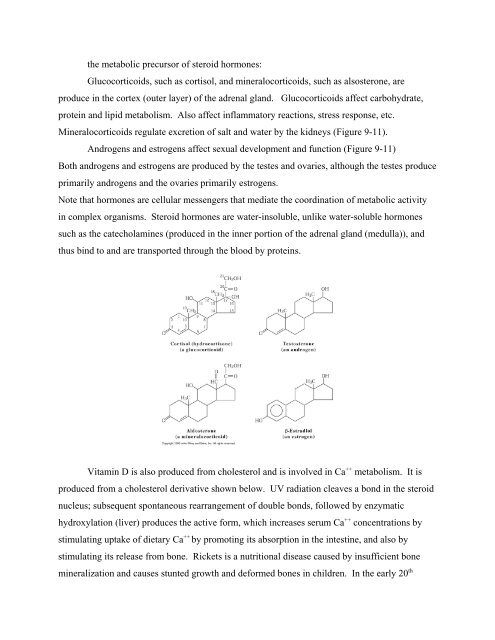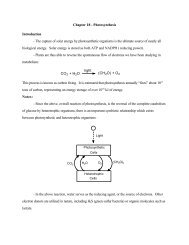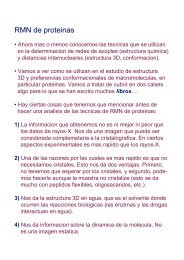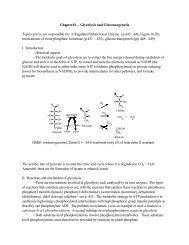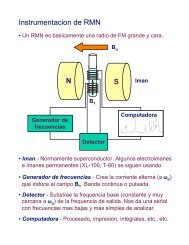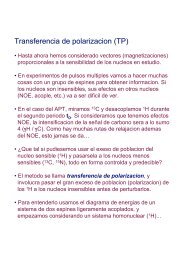Chapter 9 - Lipids and Biological Membranes
Chapter 9 - Lipids and Biological Membranes
Chapter 9 - Lipids and Biological Membranes
You also want an ePaper? Increase the reach of your titles
YUMPU automatically turns print PDFs into web optimized ePapers that Google loves.
the metabolic precursor of steroid hormones:Glucocorticoids, such as cortisol, <strong>and</strong> mineralocorticoids, such as alsosterone, areproduce in the cortex (outer layer) of the adrenal gl<strong>and</strong>. Glucocorticoids affect carbohydrate,protein <strong>and</strong> lipid metabolism. Also affect inflammatory reactions, stress response, etc.Mineralocorticoids regulate excretion of salt <strong>and</strong> water by the kidneys (Figure 9-11).Androgens <strong>and</strong> estrogens affect sexual development <strong>and</strong> function (Figure 9-11)Both <strong>and</strong>rogens <strong>and</strong> estrogens are produced by the testes <strong>and</strong> ovaries, although the testes produceprimarily <strong>and</strong>rogens <strong>and</strong> the ovaries primarily estrogens.Note that hormones are cellular messengers that mediate the coordination of metabolic activityin complex organisms. Steroid hormones are water-insoluble, unlike water-soluble hormonessuch as the catecholamines (produced in the inner portion of the adrenal gl<strong>and</strong> (medulla)), <strong>and</strong>thus bind to <strong>and</strong> are transported through the blood by proteins.Vitamin D is also produced from cholesterol <strong>and</strong> is involved in Ca ++ metabolism. It isproduced from a cholesterol derivative shown below. UV radiation cleaves a bond in the steroidnucleus; subsequent spontaneous rearrangement of double bonds, followed by enzymatichydroxylation (liver) produces the active form, which increases serum Ca ++ concentrations bystimulating uptake of dietary Ca ++ by promoting its absorption in the intestine, <strong>and</strong> also bystimulating its release from bone. Rickets is a nutritional disease caused by insufficient bonemineralization <strong>and</strong> causes stunted growth <strong>and</strong> deformed bones in children. In the early 20 th


